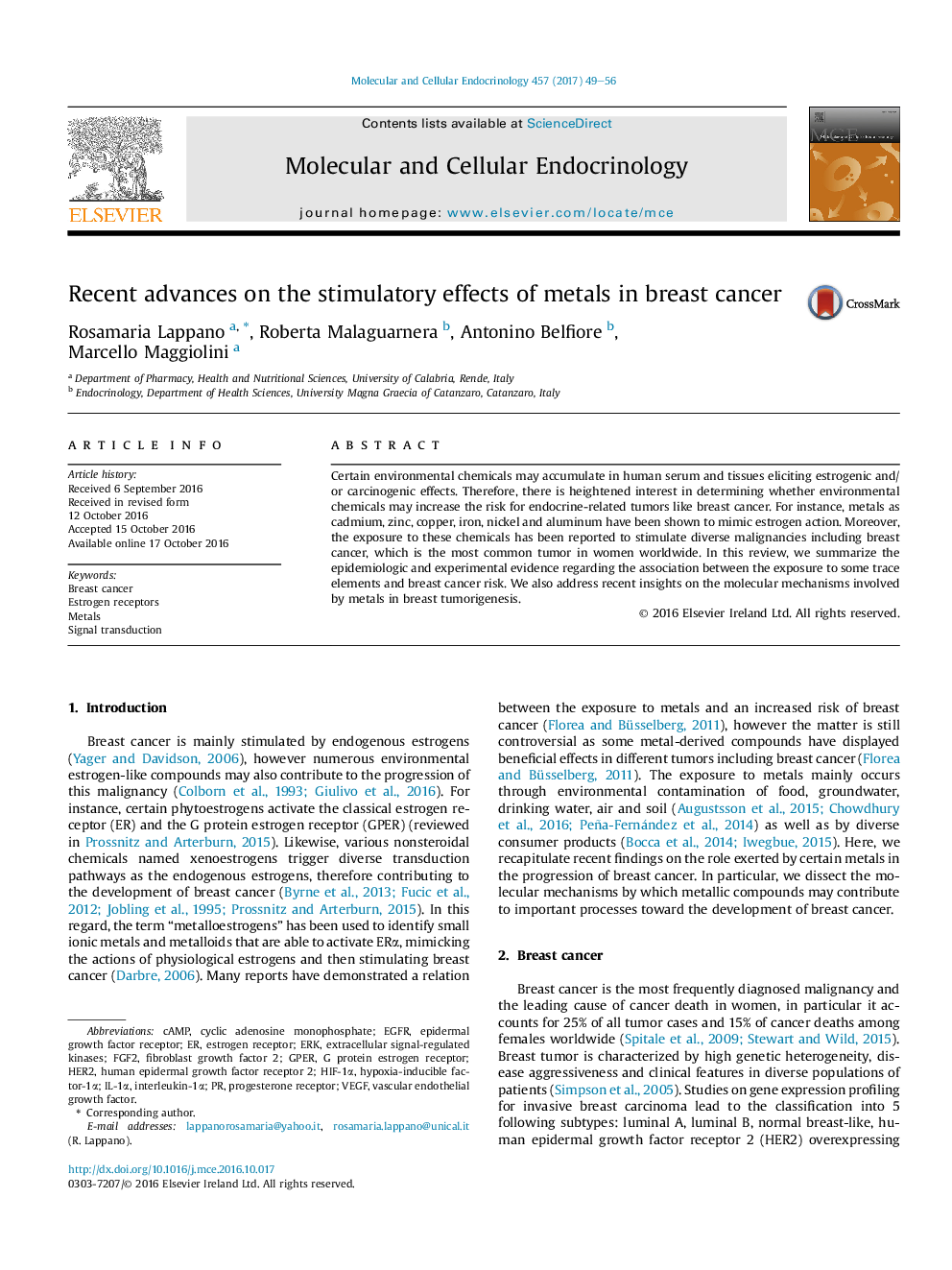| Article ID | Journal | Published Year | Pages | File Type |
|---|---|---|---|---|
| 5533985 | Molecular and Cellular Endocrinology | 2017 | 8 Pages |
â¢Diverse metals are important risk factors for the development of breast cancer.â¢Metal-activated estrogen signaling may drive breast carcinogenesis.â¢Metal chelating agents may be useful drugs in combined therapies against breast tumors.
Certain environmental chemicals may accumulate in human serum and tissues eliciting estrogenic and/or carcinogenic effects. Therefore, there is heightened interest in determining whether environmental chemicals may increase the risk for endocrine-related tumors like breast cancer. For instance, metals as cadmium, zinc, copper, iron, nickel and aluminum have been shown to mimic estrogen action. Moreover, the exposure to these chemicals has been reported to stimulate diverse malignancies including breast cancer, which is the most common tumor in women worldwide. In this review, we summarize the epidemiologic and experimental evidence regarding the association between the exposure to some trace elements and breast cancer risk. We also address recent insights on the molecular mechanisms involved by metals in breast tumorigenesis.
